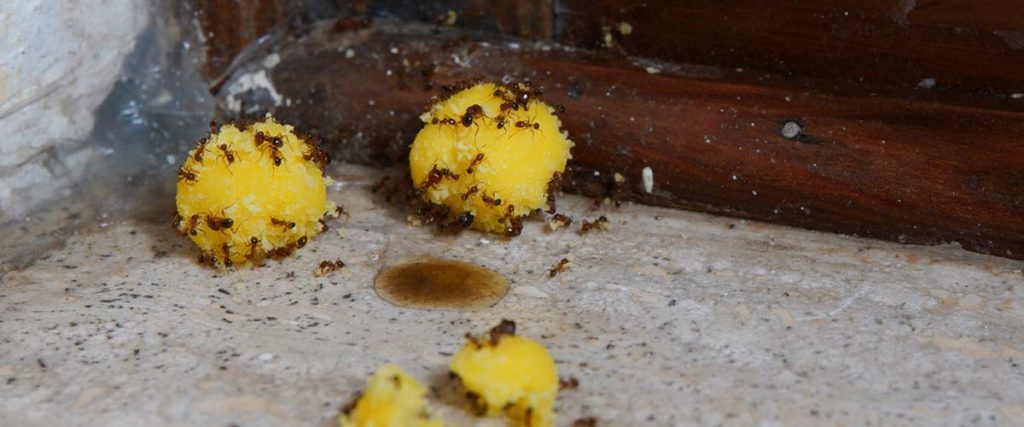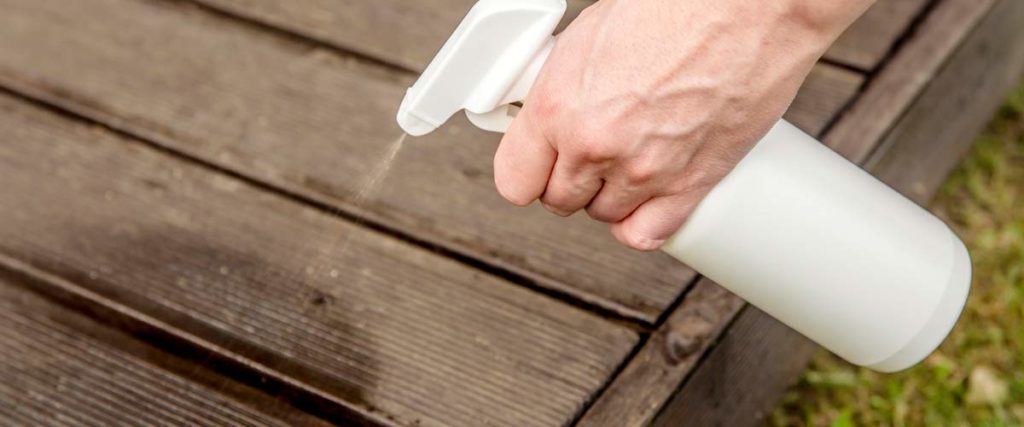Ants are one of the most common pests in America. They can be difficult to control, and most people will probably find them in or around their homes at some point in their lives. Seeing ants in the home is never good news, so if you’ve noticed a few creeping on your floorboards or kitchen counter, it’s time to take action. Fortunately, there are a variety of ways to get rid of ants on your property, and several preventative measures that you can use to stop them from returning. Here, we’ll explore some effective ant control methods you can try yourself, and discuss the strategies pest removal experts use to get rid of ants.
How to Get Rid of Ants
Identifying Common Species of Ants
Carpenter Ants:
Fire Ants:
Crazy Ants:
Odorous House Ants:
Army Ants:
Argentine Ants:
Leafcutter Ants:
How To Get Rid of Ants Inside Your Home
Removing ants from inside your home requires special safety considerations, as many types of chemical repellents are not safe for indoor use. There are several less toxic methods that you can use to combat ants inside your home:
Baiting
Baiting is one of the most effective methods of controlling ant infestations, especially when you can’t locate or access the nest. Ant bait works very slowly, allowing the workers to make multiple trips to the bait source. The workers lay down pheromone trails, which attracts more workers.
You will initially notice more ants as they form lines to the bait source, but do not disturb these lines once you have set the bait. Be patient, and wait for the ants to retrieve it and carry it back to the nest. This bait will eventually kill the individual workers that consume it, but its primary purpose is to kill the queen.
The most common active ingredient for ant bait is borax, which is effective for several reasons. Borax is inexpensive because it occurs naturally in seasonal lake beds at high levels of purity. It’s also highly lethal to ants but only mildly toxic to humans, making it safe to use inside your home. Ants eagerly seek it out for its sweet taste.
You can also soak your borax mixture with cotton balls and leave them near ant trails and entryways around your home. This method is especially helpful if you have children or pets that may get into the mixture or knock it over. Check your bait as well as the number of ants you see each week so you know if it needs to be replenished.
We’ve also reviewed several ant bait products that are the best in the business and offer a surefire way to get rid of ants fast. These baits are best used when paired with ant poison so that the ants are both lured to the bait and can take the poison back to the colony.
Indoor Chemicals
Chemicals can be an effective way to quickly kill visible ants inside your home. Chemical forms of ant control are rated for indoor or outdoor use, so it’s important to ensure that you use an ant killer that’s appropriate for the location. Indoor insecticides are generally much less toxic because they will be used in closer proximity to humans. These products may be in spray or powder form, with deltamethrin and permethrin being the most common active ingredients.
Contact pesticides, including commonly sold sprays, are the best way to kill visible ants, especially if they don’t have a well-established nest. These pesticides work quickly and have residual effects that last for weeks. People spraying for ants typically use contact pesticides in specific areas that aren’t used to prepare food.
You can buy many of these insecticides in small amounts. As long as your infestation is small enough to manage on your own, this will still be cheaper than hiring a pest control company. You can also use the insecticides as a preventative measure by spraying them around the outside perimeter of your home every three months or so to keep ants at bay. Check out the best ant sprays that you can easily pick up in stores or online to get rid of your ant problem quickly.
Natural Ant Repellants
Unfortunately, even indoor-rated insecticides can still pose some risks to the environment and your health. If you’re worried about using chemicals in or around your home, there are a few natural products that can serve as viable alternatives to conventional pest control treatments:
- Chalk: While it won’t eliminate ants, a line of chalk can work as a safe and natural repellent by temporarily disrupting the pheromone trails that ants use to navigate, causing them to look in a different direction. However, chalk lines are not an effective permanent solution, as ants will usually find their original path again after a short time.
- Diatomaceous earth: One of the most widely recognized natural ant barriers, diatomaceous earth is a naturally occurring substance created by the buildup of tiny marine plants called diatoms. Like boric acid, ants naturally avoid diatomaceous earth, and so sprinkling it across ant pathways or entryways acts as a repellent. If you choose to use diatomaceous earth, avoid the type used to purify swimming pools, which is harmful if inhaled. Food-grade diatomaceous earth is used as a dietary supplement and is less harmful.
- Essential oils: Essential oils are what their name implies—concentrated oils taken from various plants. Cinnamon oil, lemon oil, and peppermint oil are often effective at disrupting the chemical trails that ants use to lead other ants to food sources. Put a small amount in a spray bottle with water and spray this on the trail and the areas around it, and ants may lose interest in the food source in your home. You can also put essential oils on a cotton swab and apply them directly to the trail.
How To Get Rid of Ants Outside Your Home
If you have an ant infestation in your yard or the area around your home, there are several different treatment options. You can safely use a wider range of chemical products outdoors, but some effective natural methods can help you get rid of ants without risking harm to your lawn or garden. Here, we’ve outlined some of the best outdoor methods for baiting and killing ants:
Barrier Sprays
If you have ants around the perimeter of your house, applying barrier spray can help prevent them from encroaching even further. You would typically use barrier sprays along the foundation line of your home to stop ants from entering.These sprays kill ants on contact and act as a long-lasting repellent that keeps them away from the area. However, barrier sprays can be toxic to children and other animals, and must be periodically re-applied to the same areas of your home.
Ant Granules
Ant granules are small particles containing pesticide that you can spread around your property to combat outdoor ants. There are two main types of ant granules: granular bait, which contains insecticide-laced food particles designed to entice and poison ants, and granular insecticide, which contains no food particles and can be spread over your lawn to keep ants away.
Boiling Water
If you notice ant holes popping up around your property, but want to avoid using chemicals on your lawn, boiling water may be a surprisingly effective solution. Pouring boiling water into ant holes can help kill the ants in their underground colonies without the risk of poisoning beneficial plants or other local wildlife.
How To Prevent Ants From Entering Your Home
When it comes to getting rid of ants, the best treatment of all is prevention — practicing good habits to keep your house clean and sealed off from pesky intruders. Utilizing the right preventative strategies before you notice ants can help save you the trouble of dealing with an infestation. There are several proactive measures that you and your family can take to greatly reduce the likelihood of an ant infestation in your home:
Clean up Food and Waste
Ants will eat just about anything. Their tastes vary depending on the species, and identifying the invasive species will help you target the right treatment. But even if you don’t know what type of ant has made its way into your home, keeping things clean is key:
- Promptly clean up any crumbs, spills, or food waste, especially anything containing sugar.
- Always use placemats when you eat so any spills can be contained and wiped off afterward.
- Clean your kitchen appliances regularly. Your fridge, microwave, toaster, and oven all collect food residue every time they’re used, and ants can detect even the tiniest amount.
- Wipe down your kitchen counters and any other places where you eat regularly. Make sure you also sweep your floors to get rid of any crumbs.
- Keep your garbage can closed and make sure to mop up any spills on or around it.
Properly Seal Your Food
Food that’s left out is a prime target for ants. Adequately sealing food can prevent ants from detecting it and stop them from making themselves at home in your kitchen. There are several important food storage and disposal practices that can help keep ants away:
- Keep food in sealed containers, especially items containing sugar.
- Dispose of unused pet food or put it away at the end of the day. Don’t let it remain in a dish overnight.
- Take out the trash regularly to keep the smell from attracting ants. Make sure your garbage lid fits and closes properly to seal off all your waste. Its odor can attract ants and other insects, like flies.
- Keep an eye on any food you leave outside your pantry or fridge (such as fruits) to make sure they’re not rotting and attracting ants with their odor.
Minimize Moisture
Along with food, ants are also always on the hunt for water. Ant infestations often occur during rainy seasons when they congregate outside near puddles and in drier seasons when they head indoors in search of moisture. Luckily, there are ways to curb this problem in and around your home:
- Minimize the amount of water around your house by fixing any leaky pipes, both inside and out.
- Ensure that your gutters drain water away from your house. Make sure they aren’t clogged with leaves or other debris that will sit and retain moisture
- Consider using a dehumidifier if you live in a humid area. This can remove excess moisture from indoor air.
- Eliminate piles of leaves, branches, or wood that retain water in your yard.
- Regularly trim your grass, bushes, and trees so they aren’t providing shady, moist areas for ants to flourish during rainfall. This is especially important during rainy seasons.
- Make sure your outdoor trashcans have tight-fitting lids. Rainwater can easily become standing water — the perfect environment for insects to feed and breed.
- Remove empty planters, old toys, unused bird feeders, or anything else outside that might trap and contain water. Planters or any other items sitting out in your yard should be properly fitted with drainage holes.
Outdoor Care
Along with maintaining your lawn to reduce moisture, other outdoor habits can ensure that an ant colony doesn’t make its way into your home:
- Check your lawn for any pet waste. This can easily go unseen and decompose, attracting ants and other pests.
- Pick up any trash that might have made its way into your yard or fallen out of your trash cans.
- If you have a garden or any fruiting plants, pick ripe fruit and vegetables or dispose of those that have fallen on the ground.
- Regularly wash out and disinfect any outdoor trash cans to eliminate buildup and odor.
- Trim back branches that lead to the roof of your house or any entryways. They provide a perfect bridge for ants and other insects to enter your home.
Seal and Clean Your Entryways
Scrub your doorways and windows with a mild solution of soap and water. This will remove pheromones from ants that have already entered your home, thus preventing other ants from following their trail.You should also seal any entrance points for ants in your house — primarily cracks in your foundations, walls, and windows. Caulk is the most common sealant for this purpose, although the best choice may depend on the specific material that you’re sealing. You can also use weatherstripping and seals for doors that leave a wide gap, even when they’re closed.
Using Exterminators To Get Rid of Ants
In many cases, removing ants is a complicated task that’s too difficult for homeowners to tackle on their own. If you’re dealing with a severe infestation that is affecting your everyday life and making your home an unsanitary or dangerous place to live, it may be prudent to call a pest control professional.
Professional pest controllers utilize specialized equipment that you may not have in your home, and frequently provide free estimates that allow you to determine the severity of the infestation before making a financial commitment. The exact approach they will use depends on the type of ants in your home and the nature of your infestation, but most pest control experts rely on three fundamental steps to assess and treat ant problems:
Identify the Cause
When you report an ant problem to a pest control professional, their first course of action is to inspect your property and identify the cause and source of the infestation, as well as the type of ants involved. The inspection will include all possible entry points and any other elements that may be attracting ants, such as stagnant water or improperly stored food. Local pest control professionals will likely have experience dealing with common ant species in your area, which will help them to identify the best treatment for your situation.
Evaluate the Situation
To develop a customized treatment plan for you, pest control professionals will try to learn as much information as they can about your situation. This includes the type and severity of the infestation, the damage it has already done to your home (if any), and any concerns you or your family may have about the use of chemical treatments. In many cases, pest control professionals will monitor the activity of the ants in your home for some time before beginning treatment. This helps ensure that their plans account for all entry points, hives, and colonies.
Treat the Infestation
Once the exterminator has a complete understanding of your situation, they will recommend a customized treatment strategy based on your needs. The exact methods they will suggest, and the estimated timeline for treatment, will depend heavily on the type of ants and the severity of the infestation, as well as your personal safety concerns. For example, exterminators may avoid using certain chemicals if you have pets around the house, or if they find ants in areas where you prepare food.
Most exterminators will begin by securing all visible entry points with caulk, such as your home’s doorways, windows, and thresholds. Then they will lay down a barrier around the perimeter, which can be insecticide-based, or a more natural alternative like peppermint oil.After making sure that no new ants can enter your home, your pest control professional will begin the extermination process. They may use baited traps, or they could take a more direct approach by tracing the lines of ants and applying chemicals to the source. Depending on where the colonies are located in your home, your exterminator may need to drill holes in your wall to properly administer treatment.

Trying to get rid of ants for good?
Get a FREE Quote & BEST PRICE from a local exterminator
(866) 470-1609Available Next Day
No Obligation Assessment
Guarantee Results



